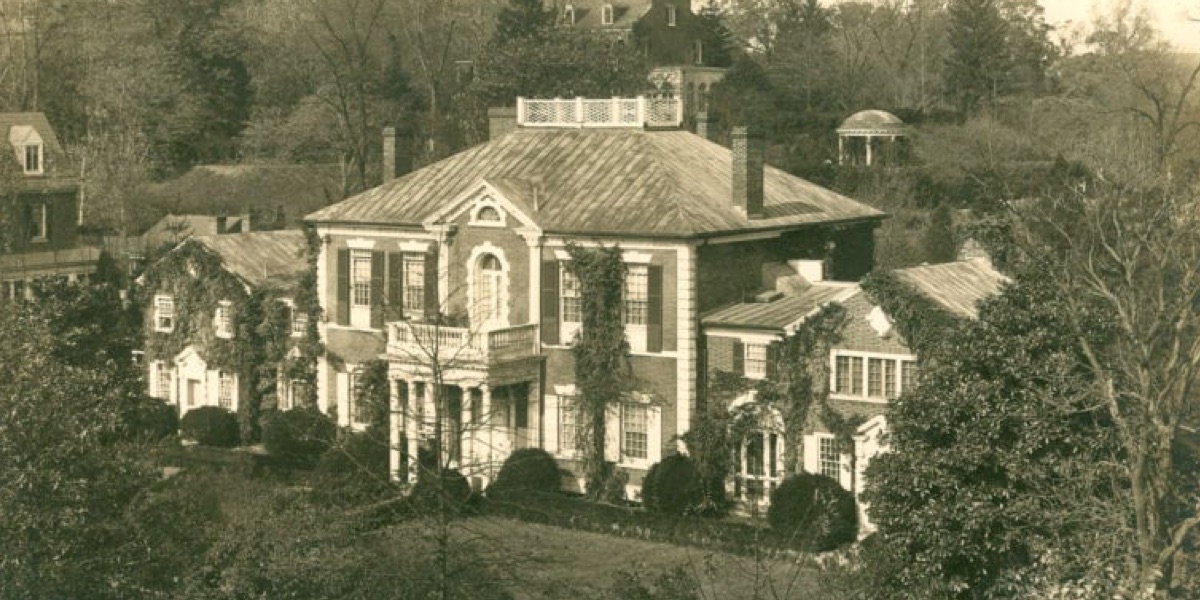Located in the Georgetown neighborhood of Washington DC, Dumbarton House is home to the National Society of The Colonial Dames of America (NSCDA). It’s also a museum that showcases colonial artifacts.
The NSCDA bought Dumbarton House in 1928 and restored it to its original state, preserving it for its national headquarters. The two main floors of the house are now the Dumbarton House museum.
1. Dumbarton House
The Heights of Georgetown, along Q Street and above, are awash in the elegant homes of well-to-do Washingtonians. Several beautiful public museums stand out.
Dumbarton House, a Federal-style historic house museum, is one of them. It was built in 1799 and is a fine example of American architecture from the early Federal period.
It was home to Joseph Nourse, America’s first Register of the Treasury and a prominent citizen of Washington. Nourse occupied the home from 1804 until 1813, when he sold it to Charles Carroll.
During this time, it changed owners and residents multiple times. When Hinckley bought it in 1912, he did a lot of alterations to the home.
In 1928, the National Society of the Colonial Dames of America (NSCDA) purchased it and restored the house as their national headquarters. Architects Horace Peaslee and Fiske Kimball led the restoration, restoring the structure back to its original appearance.
2. Dumbarton Oaks
Dumbarton Oaks is a historic estate and research institution in the Georgetown neighborhood of Washington, DC. Founded by Robert Woods Bliss and Mildred Barnes Bliss, it is now the home of Harvard University.
The Blisses were enthusiastic collectors and patrons of art and scholarship in the humanities. They made the gift of Dumbarton Oaks to Harvard University in 1940, which includes the estate’s grounds, buildings, and world-class collections for researchers and the public to enjoy.
Their generous gifts have shaped a unique institution that serves scholars and the public internationally in Byzantine, Garden and Landscape, and Pre-Columbian studies. Its historic gardens, designed by Beatrix Farrand, form the public face of Dumbarton Oaks and are visited by tens of thousands of visitors each year.
The Institute is devoted to the pursuit of knowledge in all fields of the humanities, and welcomes scholars at all career stages who come to study its books, images, and documents, as well as its world-class collections. Through fellowships, meetings, and conferences, the Institute disseminates knowledge to a global audience.
3. Aitkenbar Primary School
Aitkenbar Primary School in Bellsmyre, Dumbarton has been around for 57 years, but it’s about to say goodbye to the old for a brand new state of the art campus. To help make the transition a little easier, West Dunbartonshire council has come up with the fanciest teapot in town – an interactive digital display showing how the new campus will look and what it will be like for local children and their parents.
A new wave of affordable homes are also surfacing in the area. Cube Housing Association has just completed building 44 new properties at the Bonhill primary school site on Dumbain Road, while Dunbritton Housing Association is putting the finishing touches to a slew of properties at Carrick Terrace and Whiteford Crescent.
Hopefully these houses are the stomping grounds for many of the area’s current and future residents. As with most developments, there will be challenges ahead. The best news is that there is plenty of hope for those that are willing to put in the effort!
4. Dumbarton High School
Dunbarton High School is a school for grades 9-12 in Pickering, Ontario. It is one of the many schools in the Durham District School Board.
Students can take advanced placement (AP) courses, which are designed to prepare them for college level courses and exams. These can help them earn credits and exemptions from university, depending on their performance in the courses.
The school was recently named the 2015 Greenest School on Earth by the Global Coalition for Green Schools, an initiative of the U.S. Green Building Council.
A number of upgrades have been made to the building over the past seven years, including new energy-efficient windows, insulation and a more efficient compressor for the air conditioner. In addition, a solar hot water system serves half of the building.
OLSP, which has been a top performer in the area, saw its percentage of pupils attaining five Highers fall by two percent, from 45 to 40. Meanwhile Vale of Leven Academy saw a huge jump in the number of pupils achieving five Highers, with figures climbing by eight percent from 22 to 30.
